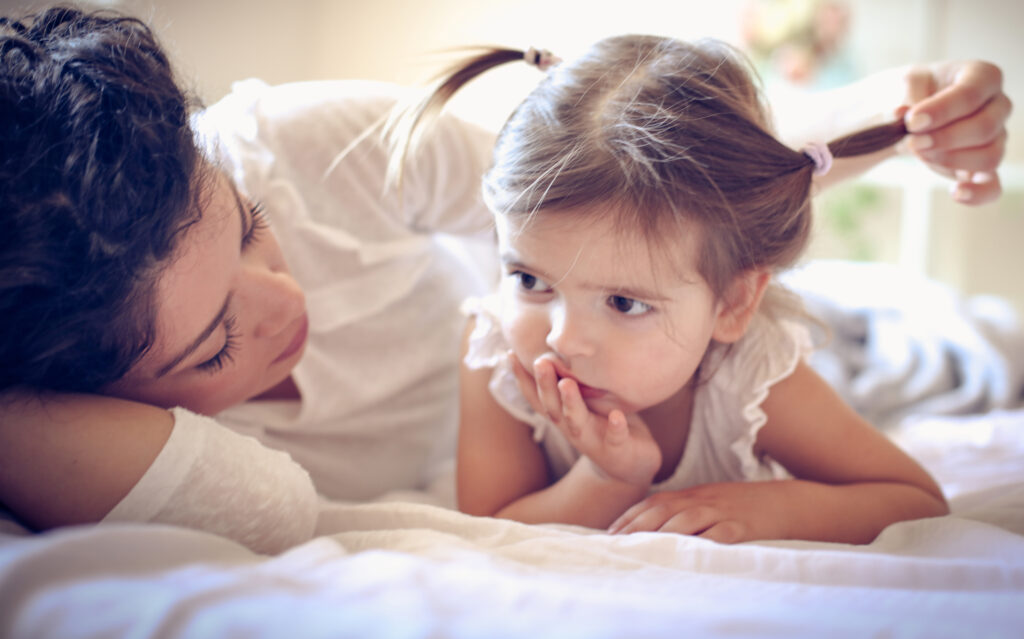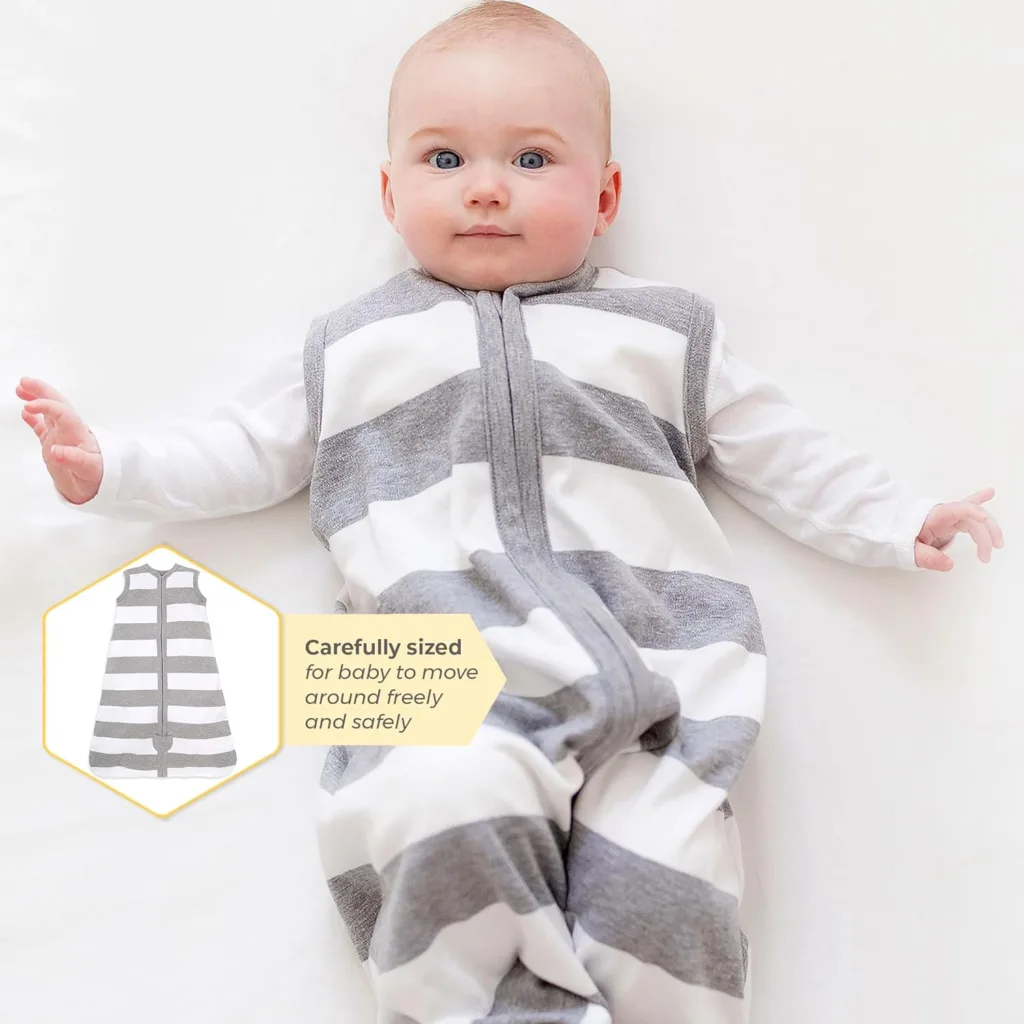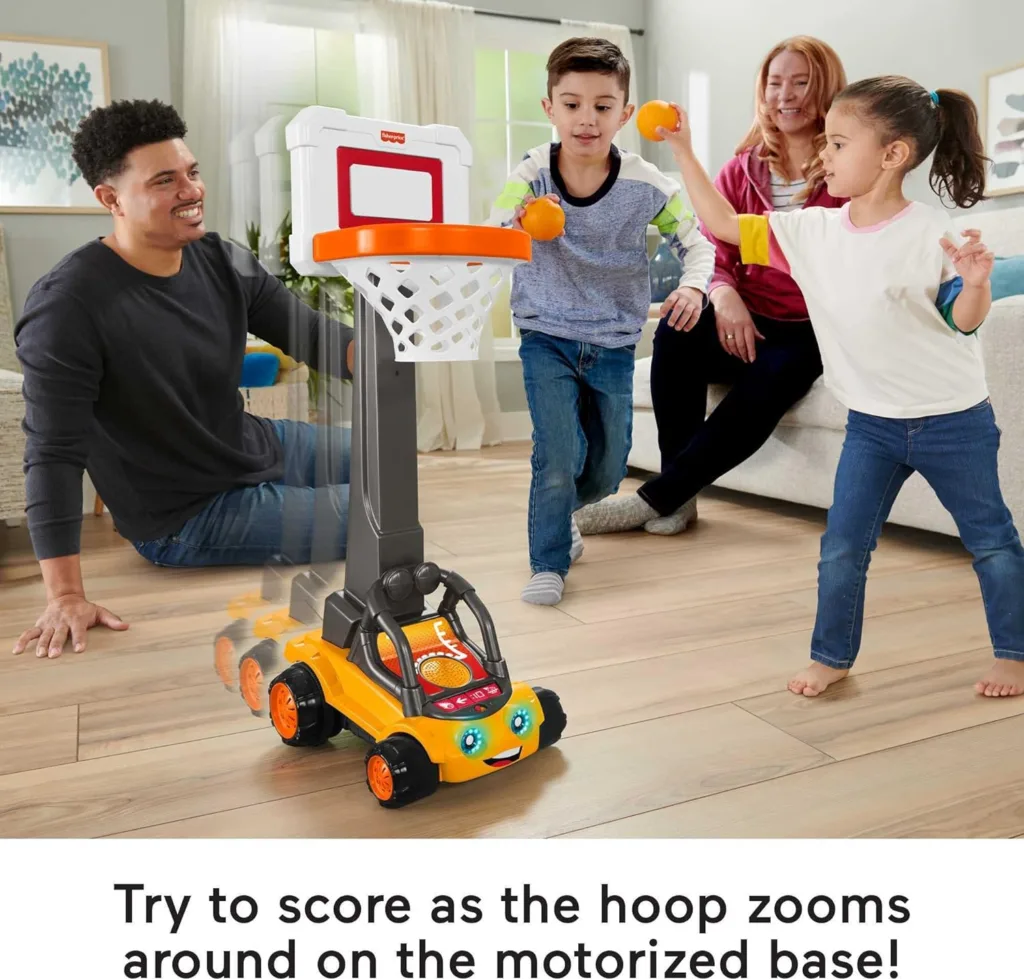Let’s be real — potty training isn’t the most glamorous part of parenting and baby care. It’s a slow process, and it’s often one full of tears and frustration (for both parent and toddler). These potty training tips and tricks will help you turn those tears into triumphs!
Introduce the Potty Early
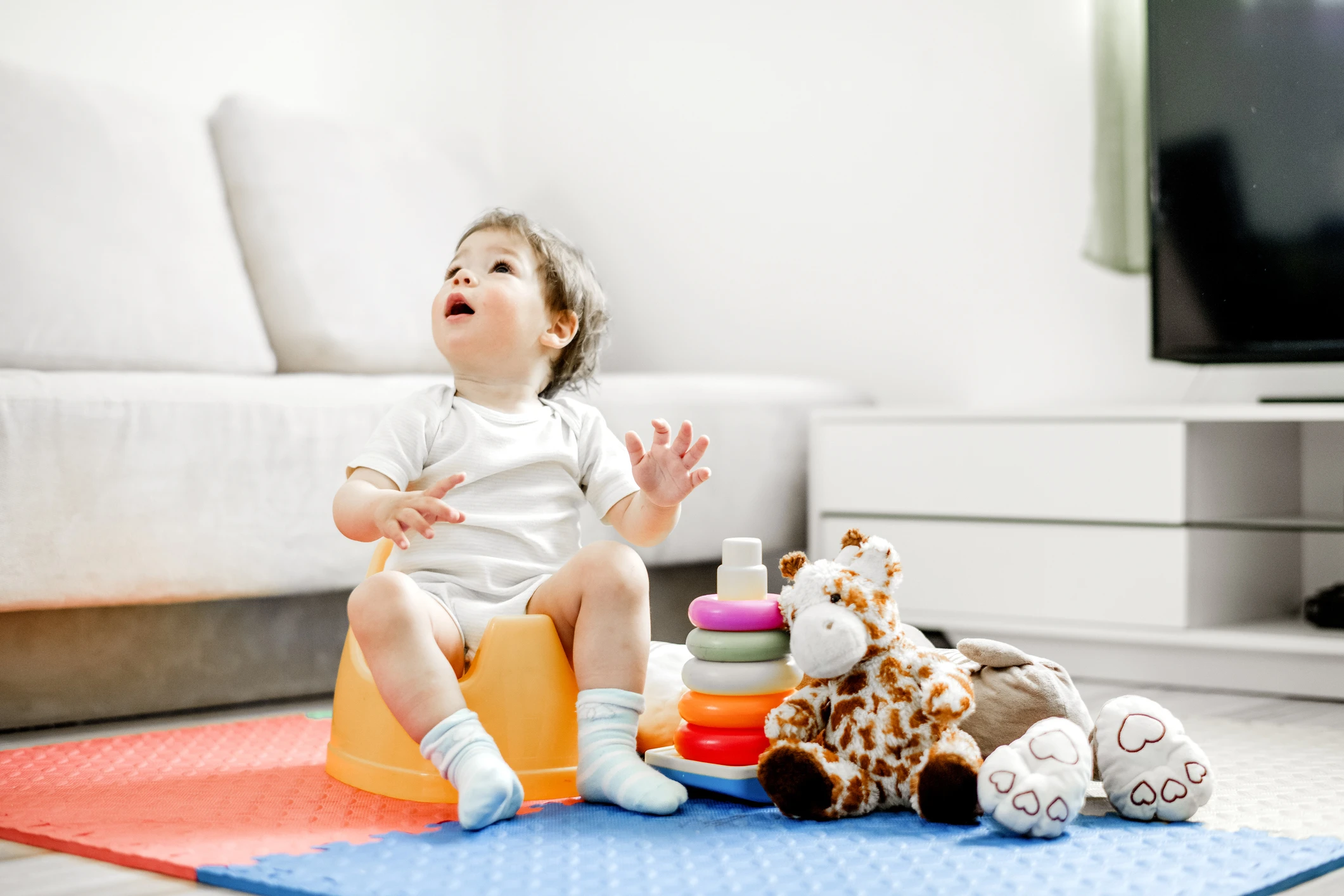
Introducing the potty before you start potty training can really set the stage for a smooth journey. Try placing the potty in your bathroom or toddler’s room.
By making the potty a normal part of your little one’s world, you help them get comfy and curious about it, long before the pressure is on.
This early familiarity with the potty makes potty training feel more like a fun adventure than a daunting task. It’s all about making them feel comfortable and safe.
Let Them Help Pick the Potty

By getting your toddler involved in potty shopping, you can make it feel like choosing a new toy. And really, is there anything more exciting than that?
This little bit of choice gives them a sense of ownership and pride in their potty, too. It can spark a whole new enthusiasm about potty time.
Even if you’ve already started potty training, choosing a new potty can be an exciting way to break up the tedium of training. Make it a reward!
Practice Pulling Pants Up and Down
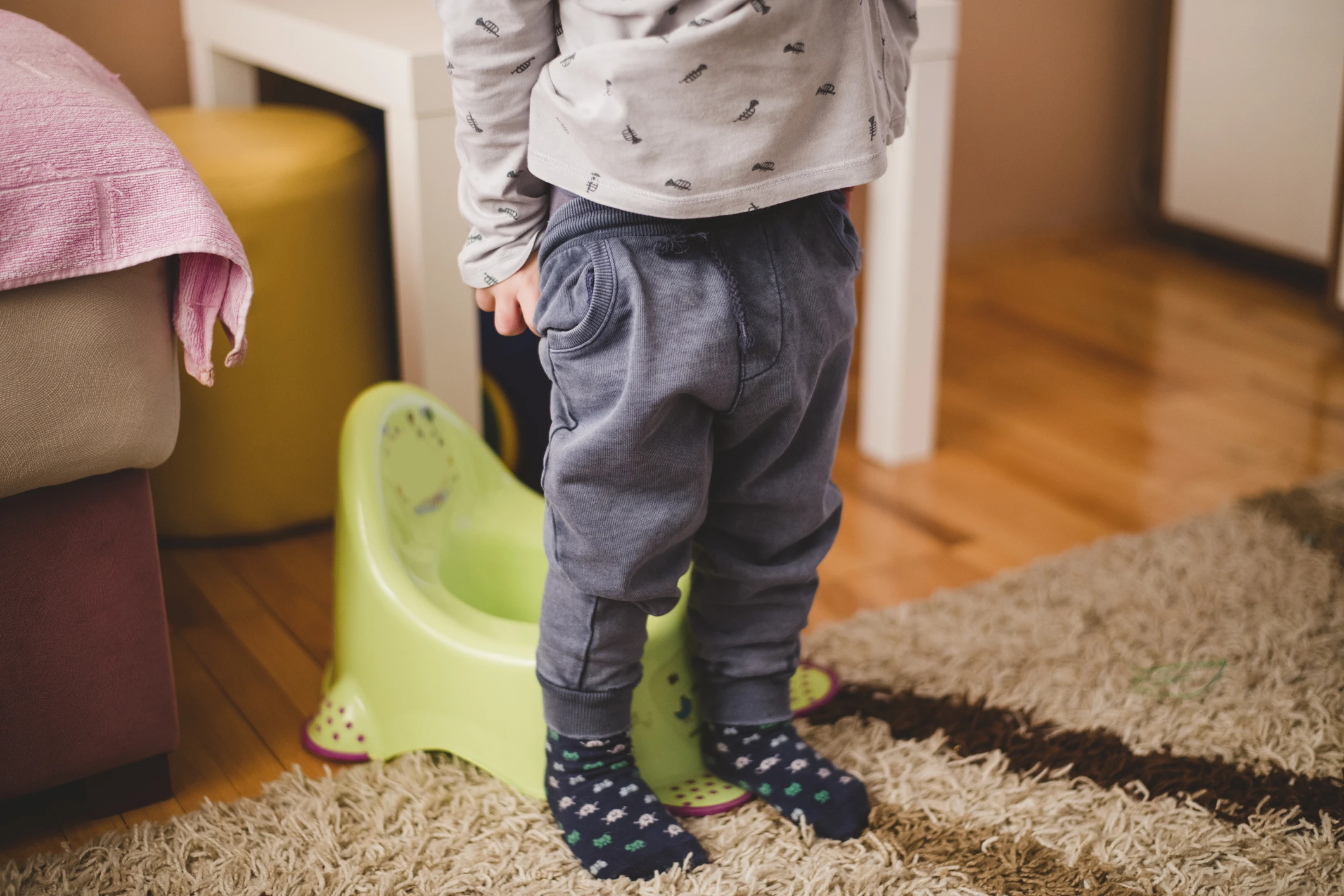
Another potty training trick that starts ahead of time is practicing pulling pants up and down. This is a key step because it boosts independence and confidence.
By mastering this skill, toddlers can respond more quickly when they feel the urge to go. And that reduces the likelihood of accidents, which we’re all for.
Being able to manage their own clothing also helps children feel more in control and proud of their potty training progress. Like independent little grown-ups!
Only Start When They’re Ready

One of the most common mistakes in potty training is starting too soon. It isn’t the end of the world if that happens, but it isn’t ideal.
Pushing a child to start too early can lead to frustrations, setbacks, and negative associations with the toilet. So how do you know if they’re ready?
Your toddler might start showing interest in the potty and a dislike for dirty diapers. They should also be having dry periods of at least two hours.
Get Caregivers On the Same Page

Getting all of your toddler’s caregivers on the same page about potty training is vital. Parents should be onboard, as well as any other caregivers.
Get everyone to follow the same routines, use similar language about potty use, and follow the same rules. This consistency reinforces the training, which is key.
It’s a great idea to sit down or communicate with all caregivers at each potty training milestone. Make adjustments as necessary, and keep everyone updated.
Establish a Routine
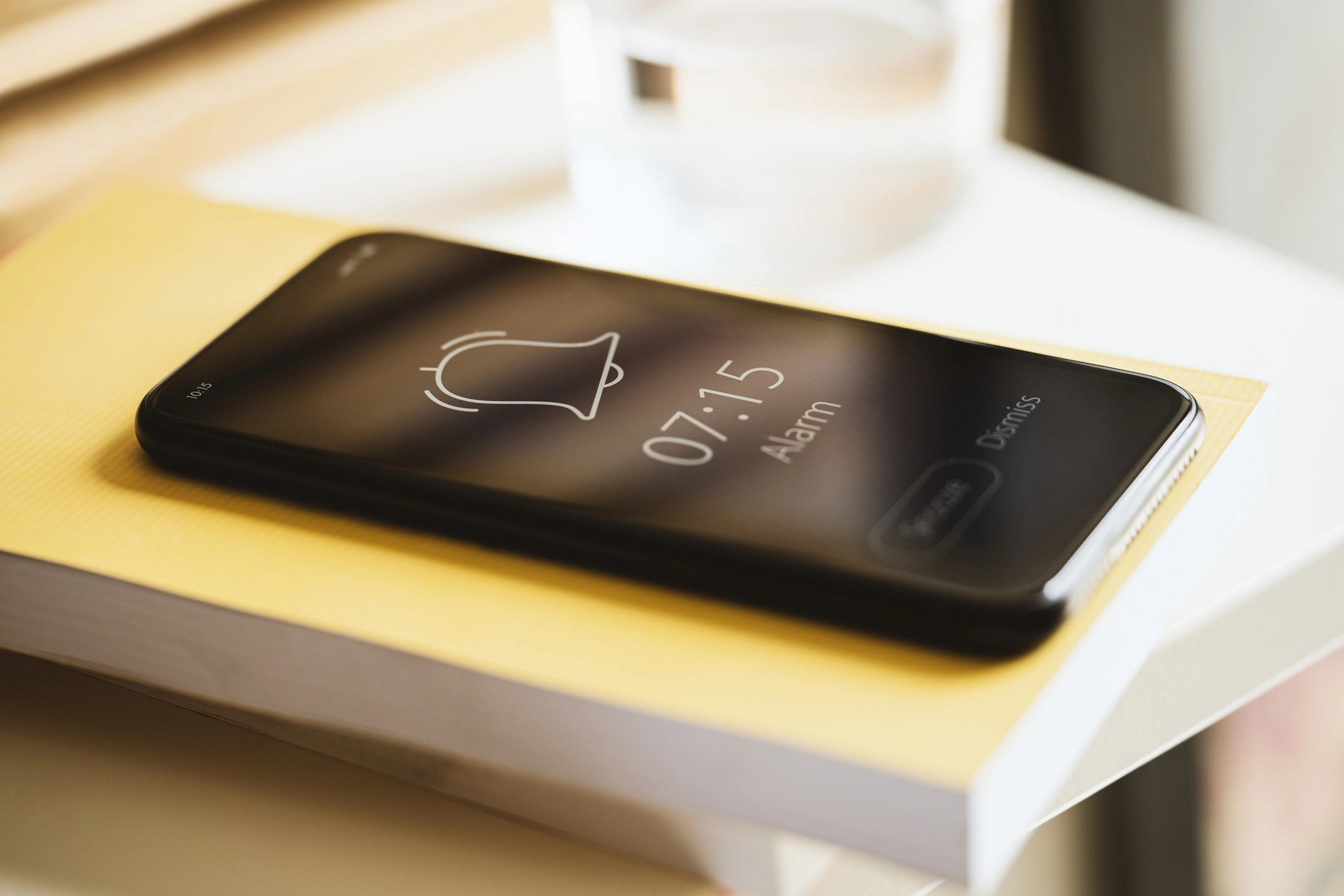
Speaking of routines, this is one of the most important parts of potty training. Routines help build a sense of predictability and security for your toddler.
When they know what to expect, they can better understand what’s expected of them. It all starts with choosing regular times for potty training.
The best times are after waking up or following a nap, after meals, and just before bedtime. Try to stick to a schedule as much as possible.
Be Flexible with Potty Times

Yes, routine is important, but so is flexibility! Being flexible lets you adapt to your child’s day-to-day needs and their progress with potty training.
As you go through the potty training process, your child’s needs will change. They might start going longer without needing the potty, for example.
Flexibility also lets you change your potty schedule to adjust for activities. Most importantly, it encourages your child to communicate their needs and have those needs met.
Use Easy Clothing
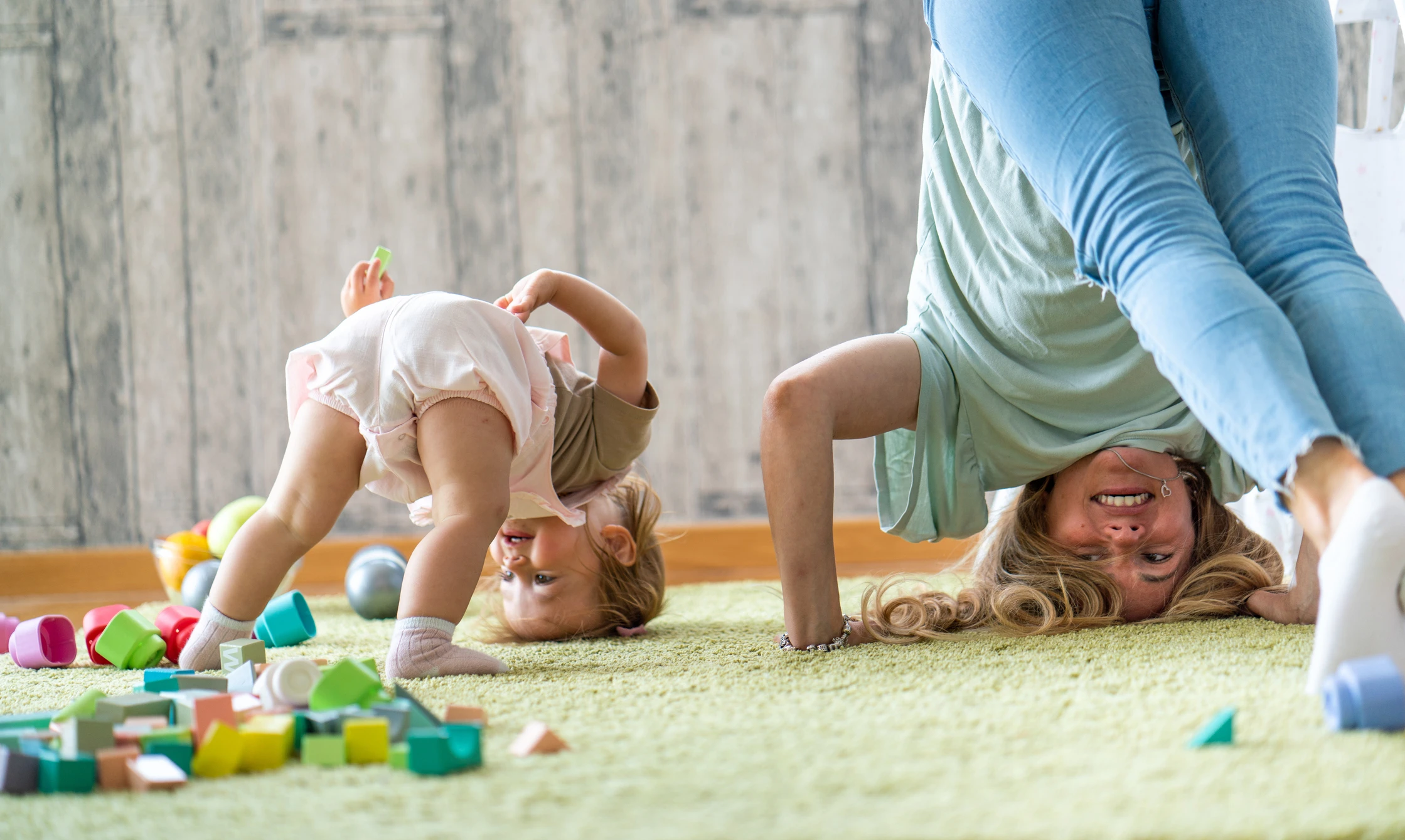
Choosing clothing that’s easy to remove and put back on can make life a whole lot easier during potty training. Both for you and your little one.
If your toddler is getting used to managing their own clothing, simple garments are essential. Think elastic waistbands rather than buttons, ties, zippers, or belts.
You should also try to choose loose-fitting clothing, which can be easier for little fingers to manage. It’s all about reducing the time to potty touchdown.
Always Praise Small Successes

When your child receives praise for their efforts, it lets them know that they’re doing the right thing. This positive reinforcement is key for potty training.
As your child goes through the process of potty training, successes will become more and more common. But it’s important to continue highlighting those moments.
Continued reinforcement and praise for small successes helps your toddler feel proud of their progress and want to achieve even more. Hand-washing and toilet-flushing, here we come!
Celebrate Big Milestones
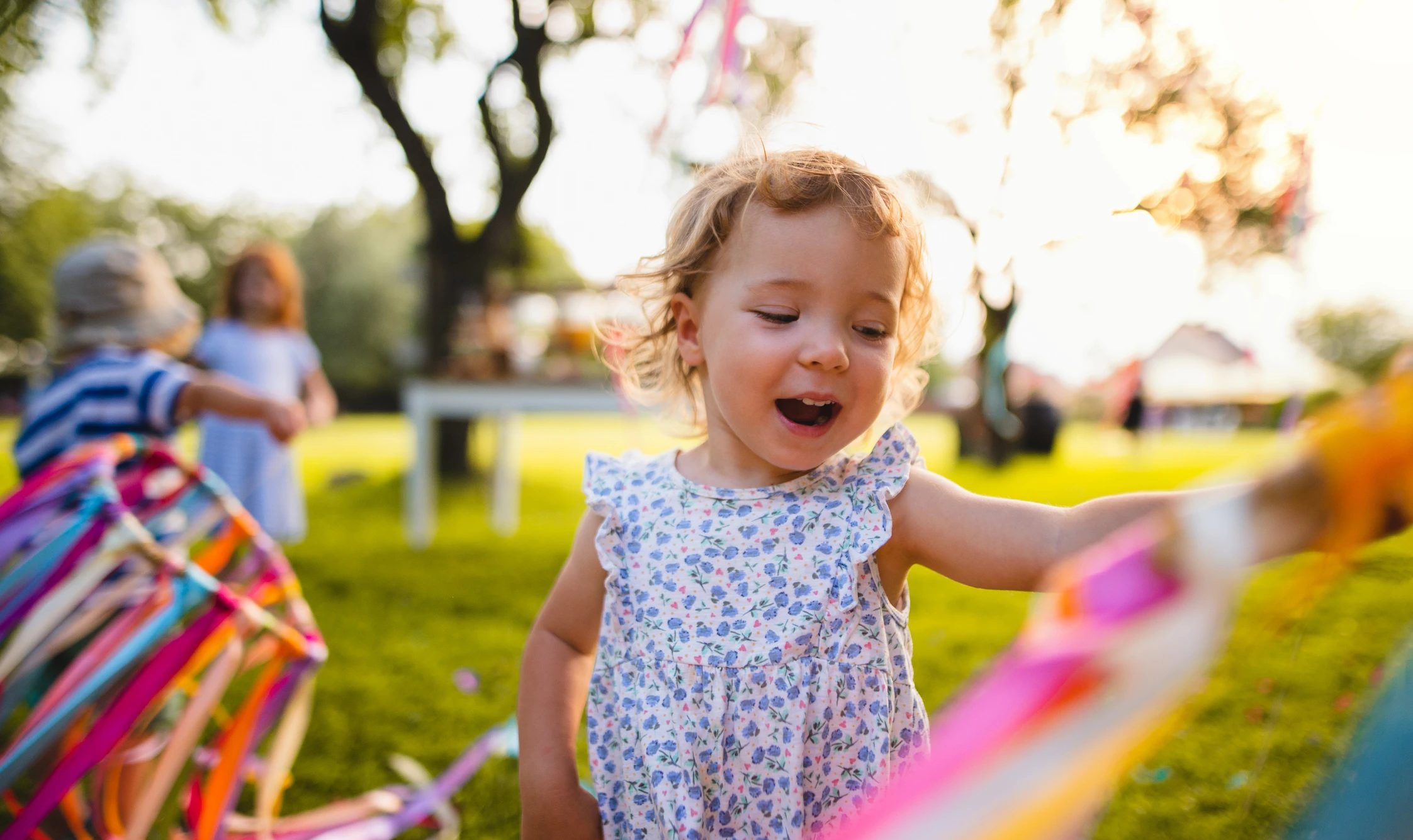
Just as important as celebrating small wins is commemorating big achievements in potty training. It’s so helpful to mark these milestones with bigger celebrations along the way.
Potty training milestones include the first time using the potty, the first full day without an accident, staying dry throughout the night, or graduating to regular underwear.
You can celebrate these milestone achievements with special treats or even a small party. Create certificates of achievement for your toddler to show family members and friends.
Stay Positive When Accidents Happen

The biggest takeaway when it comes to potty training tips and tricks is creating a comforting, supporting environment. And that means staying positive despite any accidents.
Accidents are a normal part of the learning process, and handling them with positivity can prevent your child from feeling discouraged or anxious about potty training.
When there’s an accident, try to respond with understanding and reassurance, rather than disappointment or frustration. Use this opportunity as a cheerful and positive teaching moment.
Read Potty Training Books Together
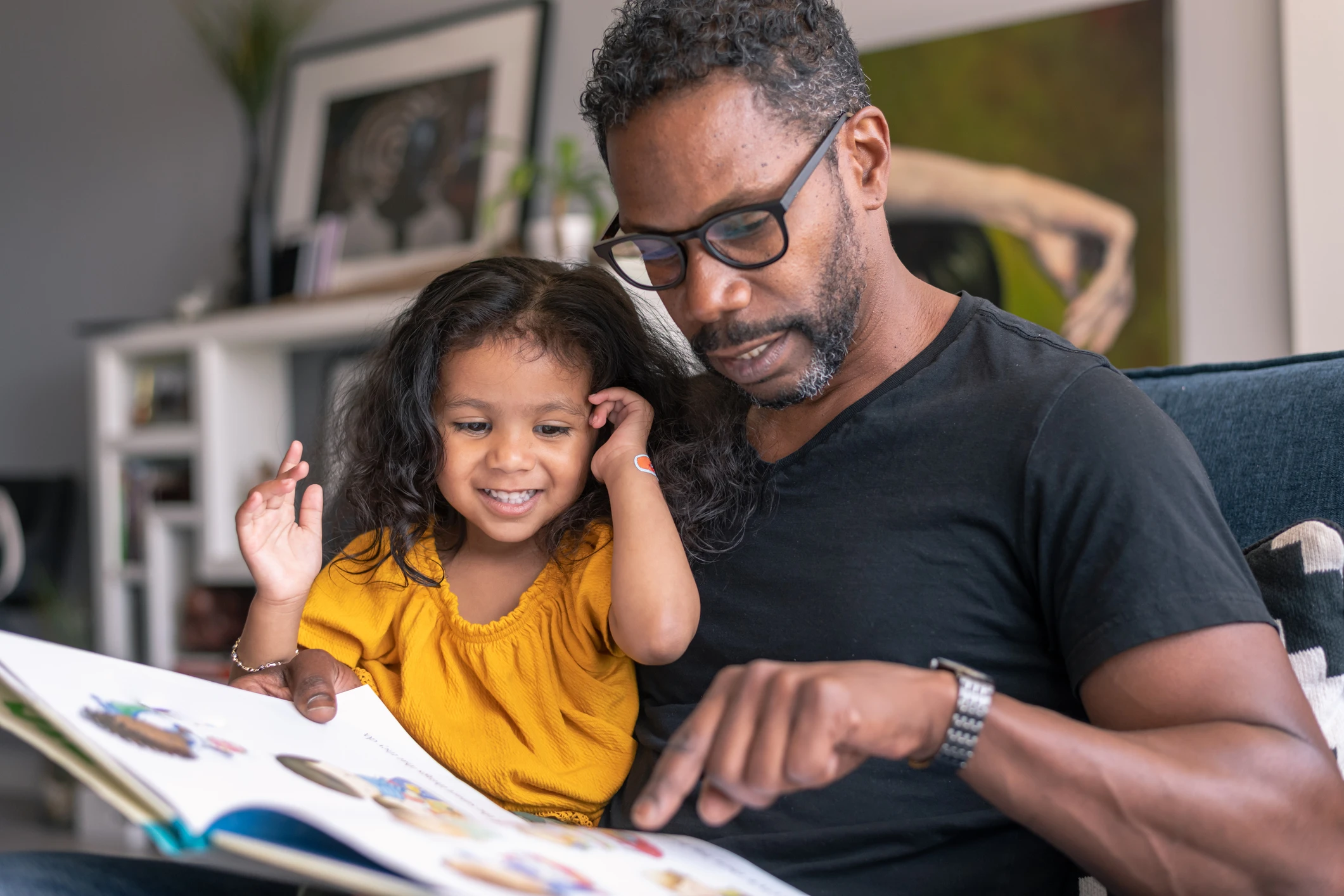
Reading potty books together is an amazing tool because it combines learning with a fun bonding activity. Plus, it’s a great way to incorporate reading into the schedule!
Potty training-themed books often feature relatable characters and stories that help demystify the process of using the toilet. This helps make it all feel more fun.
As you read together, encourage your toddler to ask questions. Use the book to provide language for them to talk about the potty and their potty needs.
Create a Reward System

A reward system, like a sticker chart, can be a fun and effective motivator during potty training. This technique plays off your toddler’s natural enjoyment of games.
First, decide on clear, achievable goals such as sitting on the potty, telling an adult when they need to go, or successfully using the potty.
Involve your child in designing the reward chart and choosing a sticker theme they love. Each time they meet a goal, they get a sticker!
Teach By Example

Children often learn best by observing and mimicking the actions of the adults and older kids around them. Put that fact to use in potty training!
Discuss your own potty routines with your child in a relaxed and casual way. You can even let your child see you or a sibling using the toilet.
This shared experience not only teaches practical skills but also strengthens the child-parent bond. It makes potty training a more integrated and natural part of daily life.
Sing Potty Songs
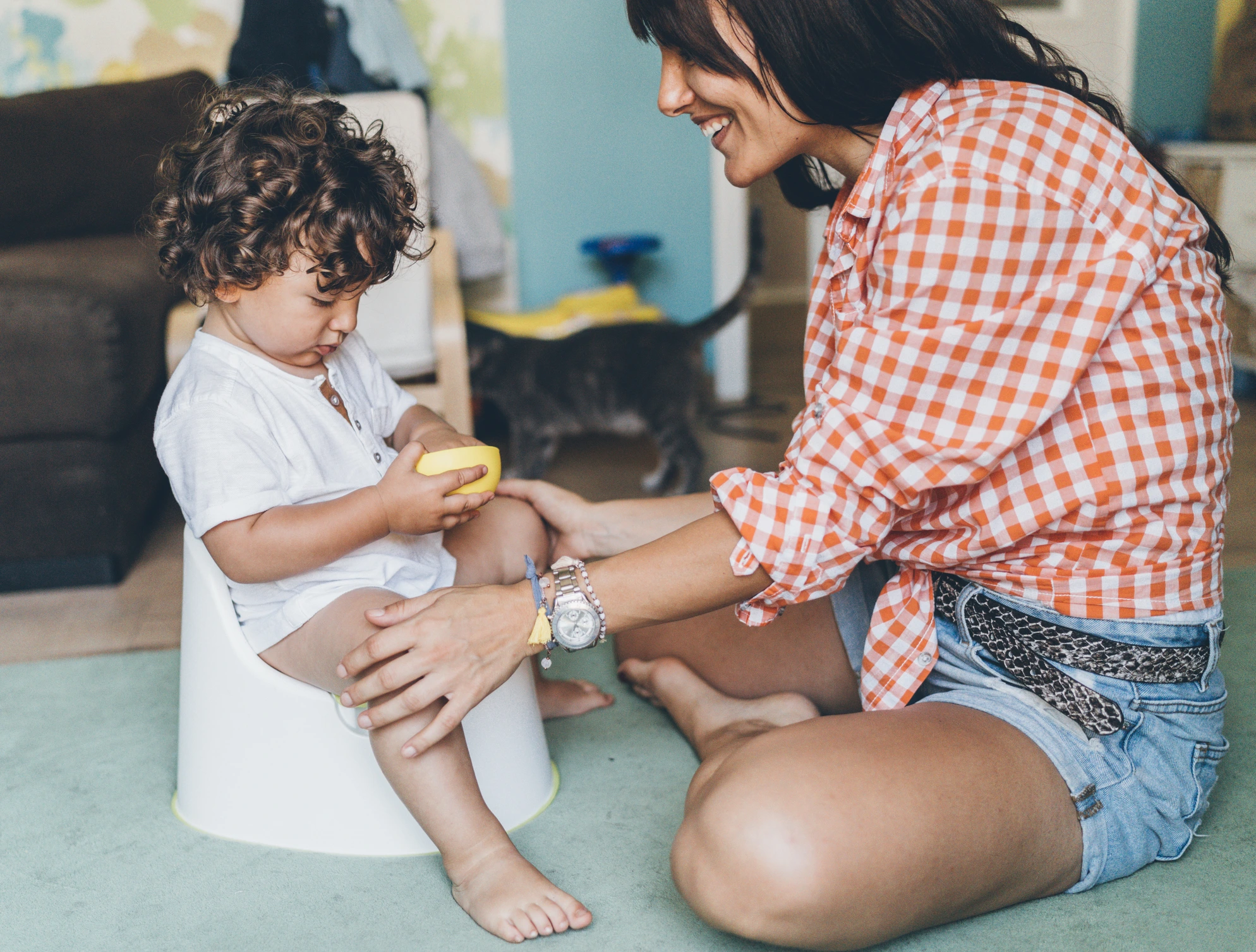
Nothing makes a toddler giggle like a silly song made up on the spot! And music is an excellent way to reinforce routines in your child’s mind.
Put potty training instructions into your lyrics, and turn them into a silly jingle. Sing it every time your child uses the potty until they can sing along.
Do you ever get a song stuck in your head that just won’t let go? So do toddlers! Make that song a silly song all about potty time.
Incorporate Potties Into Playtime

One way children grow and develop behaviors is by acting them out with their toys. Integrating potty time into that experience can be an incredibly effective tool.
Give your child the opportunity to act out potty scenarios with stuffed toys, dolls, or action figures. You can demonstrate proper potty usage with toys, first.
You can also help your child imagine scenarios where they’re sharing their knowledge. “Teaching” their toys how to use the potty can be lots of fun.
Avoid Power Struggles
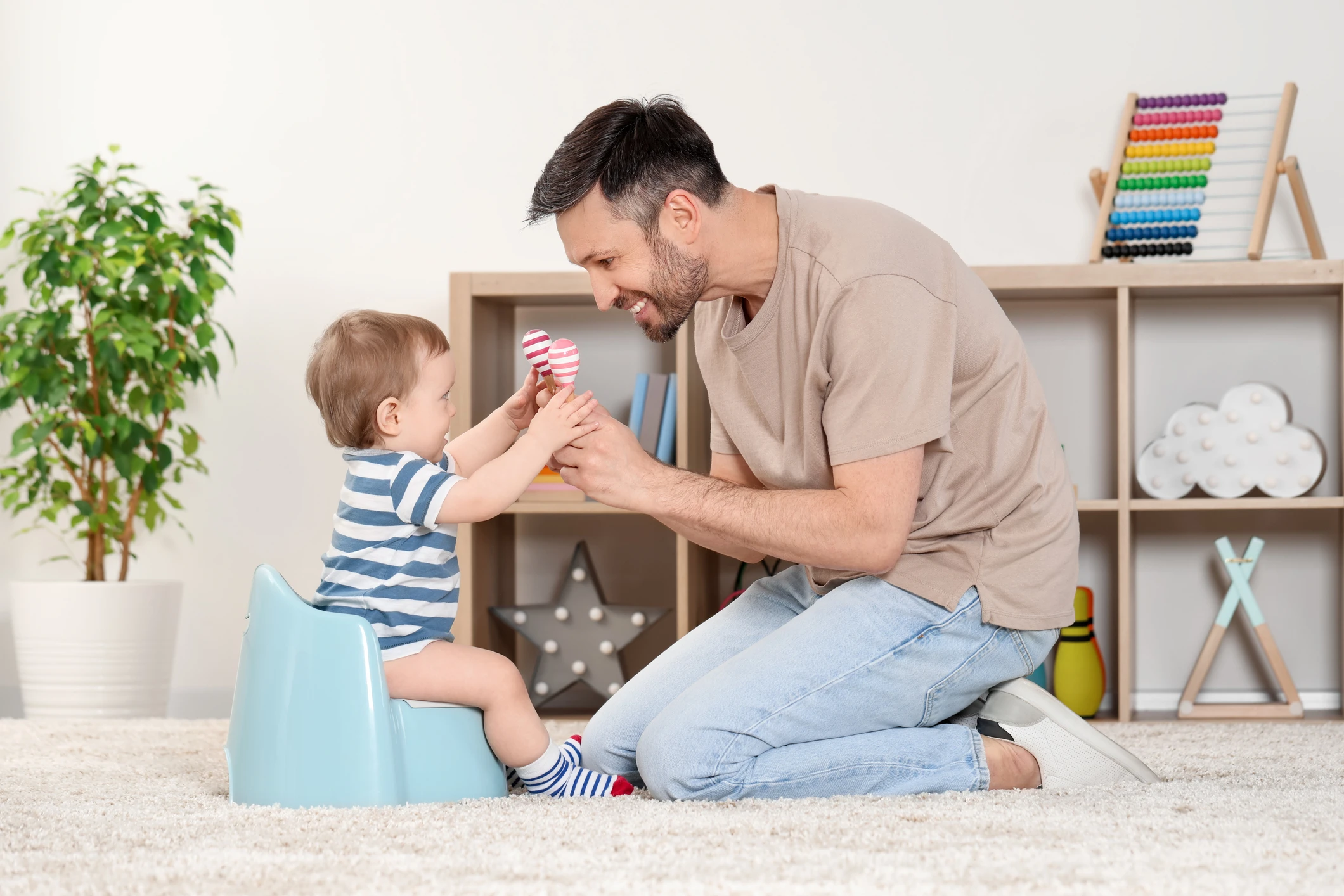
Struggles for power during potty training can lead to setbacks and frustrations, rather than a feeling of positivity and low pressure. It’s best to avoid those struggles.
Making potty training a collaborative effort rather than a battle of wills is key to successful potty times. When children feel pressured, they may resist even more.
It’s essential to realize that potty training is a major developmental milestone for your child. They need to feel in control of their own body.
Encourage Communication

Potty training coincides with important developments in speech, communication, and language development. It’s important to bring those developing communication skills into the process throughout potty training.
Open communication helps your child feel comfortable coming to you when they need to go, have an accident, or even when they’re feeling anxious about the potty.
Start by teaching your child simple words associated with the bathroom. Think phrases like “I need to pee,” “I need to poop,” “potty time,” and “bathroom.”
Encourage Sitting Down for Boys
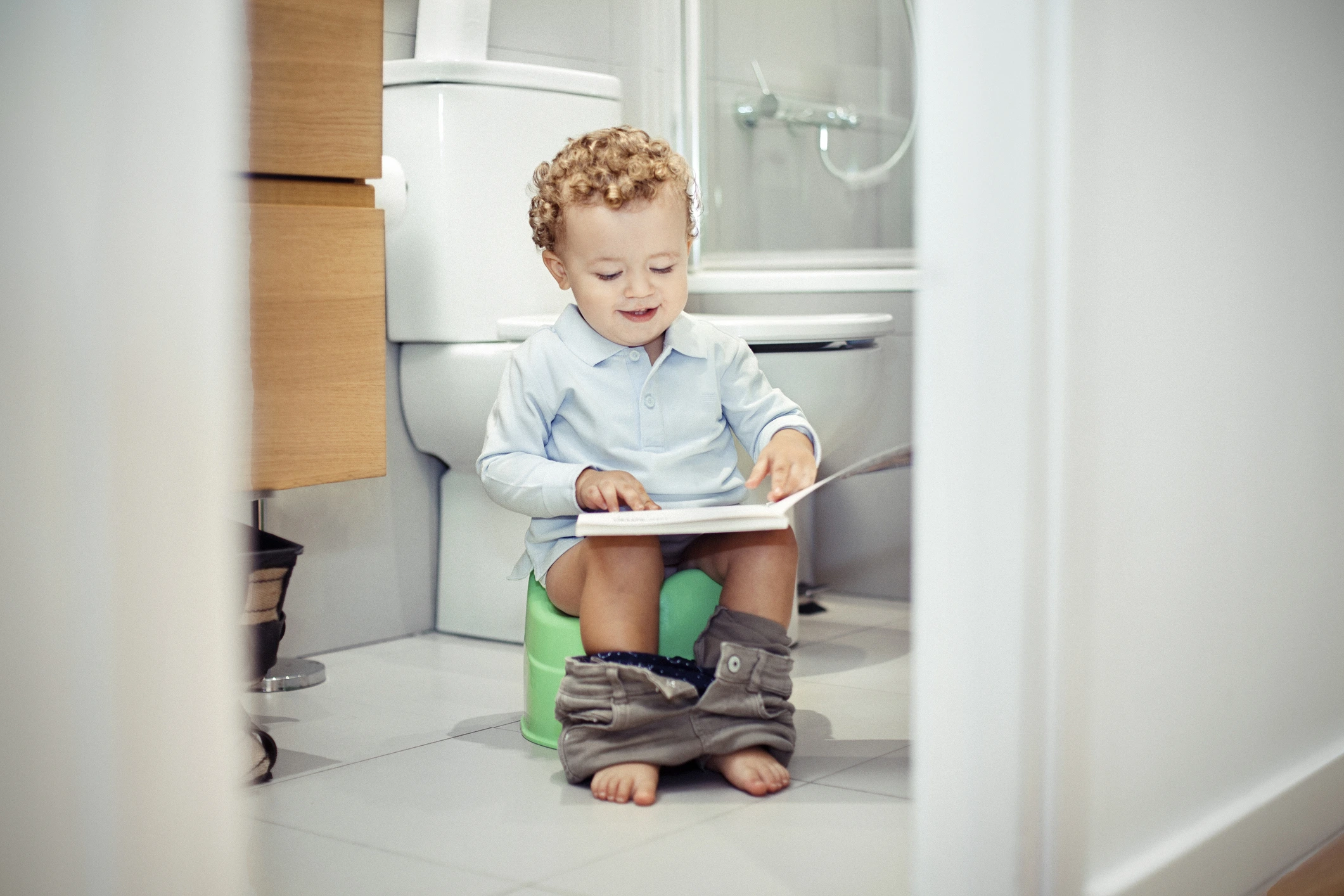
Potty training boys by sitting down at first simplifies the process and prevents unpleasant messes. It allows boys to focus solely on recognizing the need to go.
This method also reduces confusion by maintaining consistency with how they’ll learn to poop. It eases the transition into using different toilet setups in the future, too.
As boys gain confidence and control, they can then learn to stand and aim, mastering all the necessary skills in gradual stages. There’s no rush.
Take a Break and Come Back to It
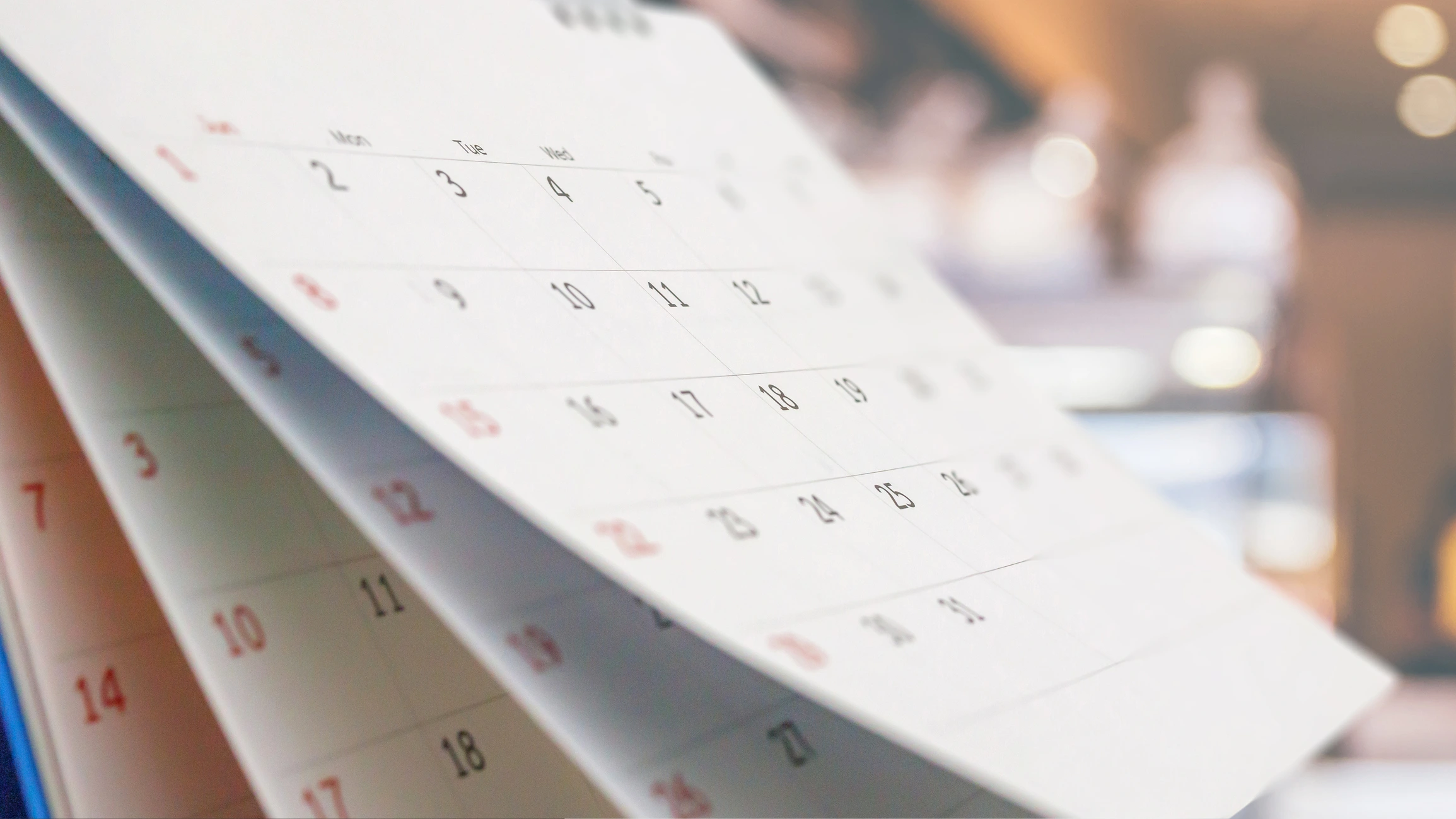
What if you start potty training but quickly learn that your toddler might not be quite ready? It might be time to take a step back.
Taking a break from potty training respects the child’s developmental pace. It can help prevent feelings of frustration and failure from pushing too hard, too fast.
During this break, maintain a supportive environment without the pressure of the potty. Help your child develop skills like communication and coordination that’ll boost their potty successes.
Buy Big-Kid Underwear

Transitioning to big-kid underwear is one of the most exciting stages of potty training. Make it a big deal, and get your toddler excited for it!
Buying big-kid underwear before they’re ready can be an excellent motivational tool. Most kids are ready to get out of diapers by this time in their life.
Let them choose underwear featuring their favorite colors, characters, or patterns. This choice gives them a sense of ownership and control over their potty progress.
Incorporate Books and Toys
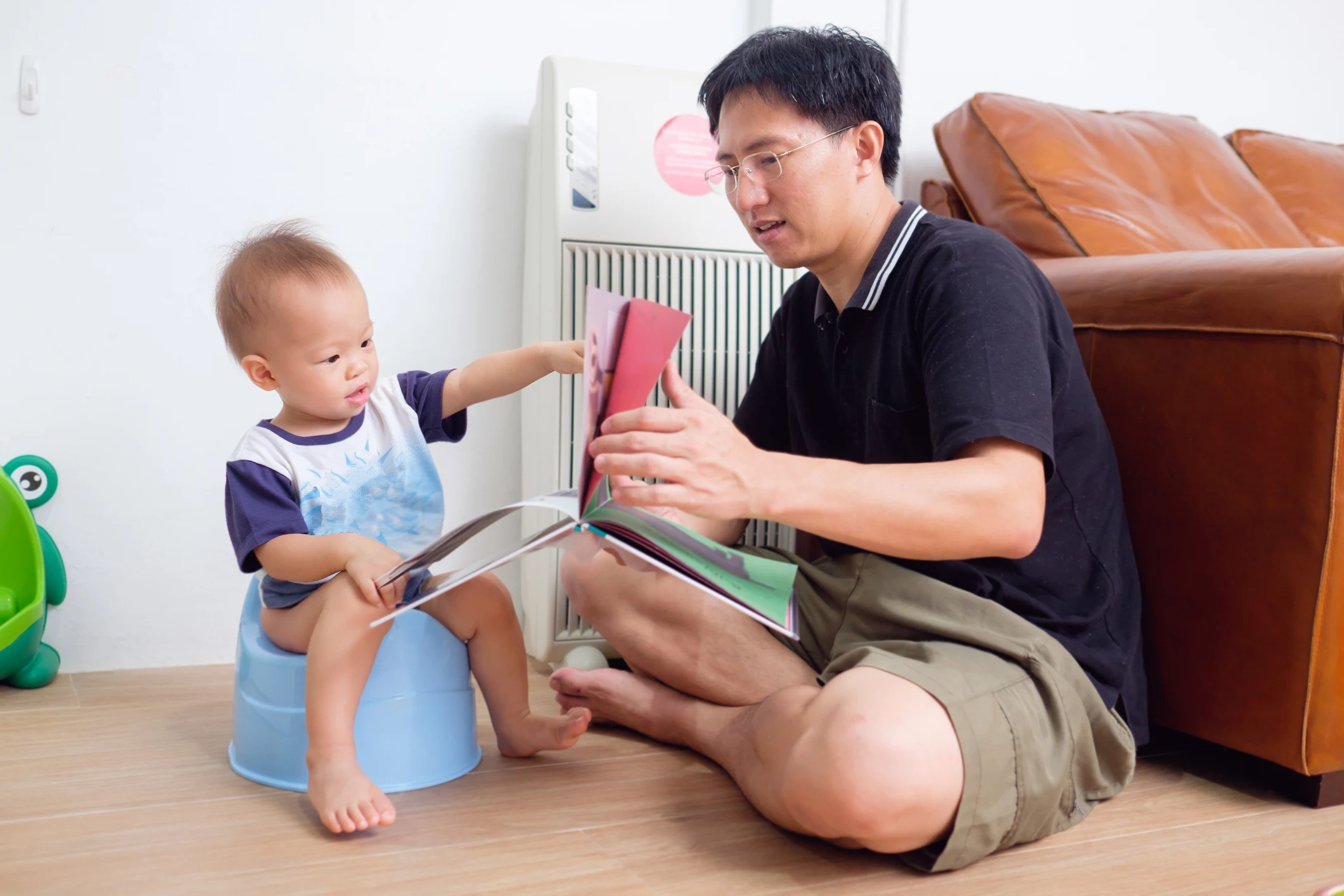
Sitting on the potty can be boring, and focusing too much on the act of pooping or peeing can cause anxiousness. Try incorporating some fun distractions.
It’s a great time to get some reading in with your toddler. Choose engaging books that your child looks forward to looking at and interacting with.
You can also encourage your child to bring a toy. Give a teddy bear or doll their own mini potty so your toddler has a potty friend!
Try Training On the Grown-Up Potty
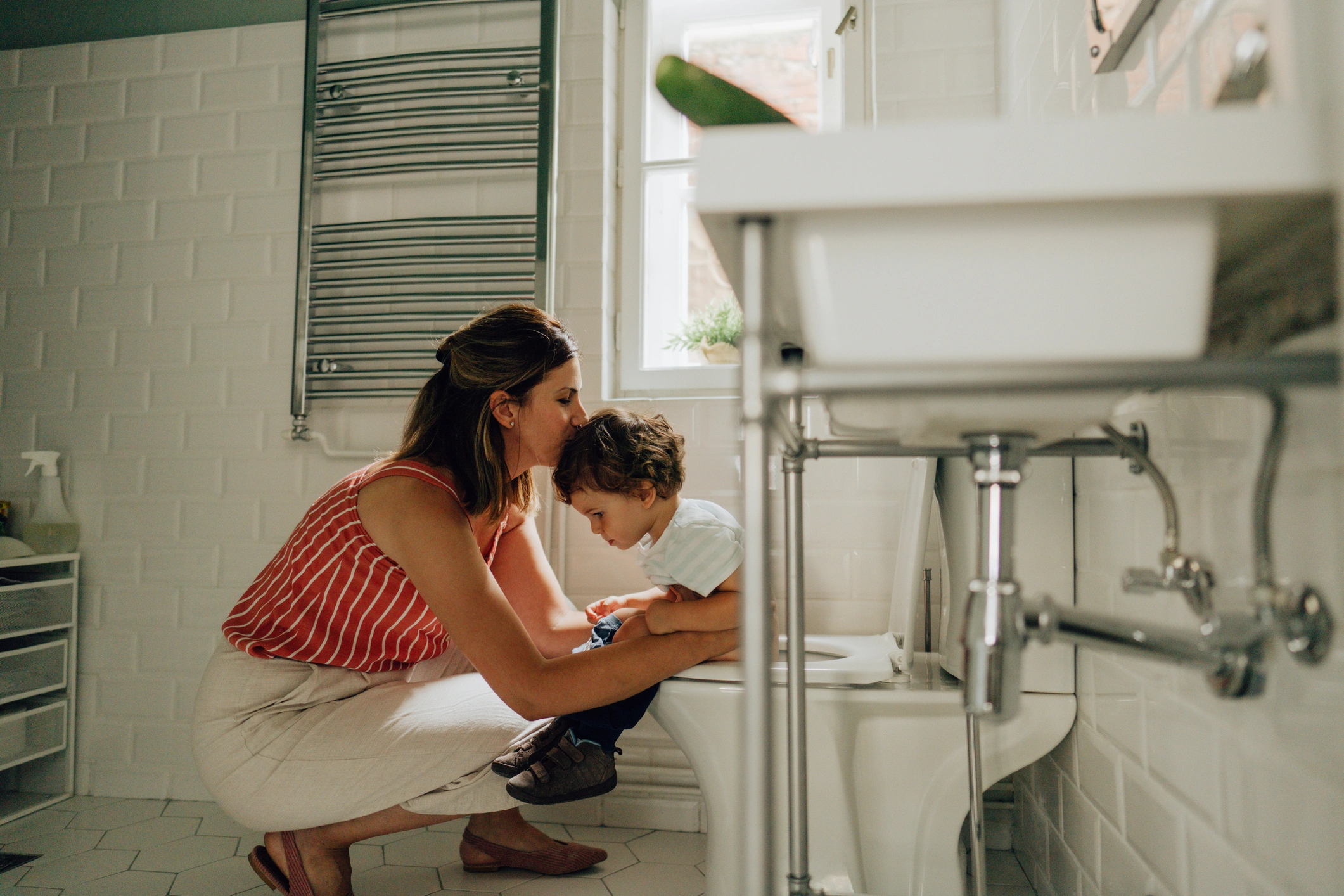
Not all toddlers will enjoy using a training potty, and not all parents enjoy it either. Many parents opt for training on the adult toilet.
Add a child-sized toilet seat, as well as a step stool so their feet are supported. This more “grown-up” approach can help them feel even more independent.
Another method is to let your child choose which potty to use. Introduce the big potty after initial training on the training potty, and let them choose.
Introduce Flushing Gradually

Once they’ve graduated to the adult toilet, don’t expect them to start flushing right away. This step can be scary at first, so it’s best to go slow.
Instead of asking them to do it themselves, let your toddler watch you flush the toilet when they’re done. They’ll see that it’s easy and even fun!
After a while of this, your toddler might start asking to flush the toilet themselves. Always reassure them that you can do it if they’re not ready.
Don’t Let Them Get Constipated

Sometimes potty training needs to go in two independent stages: first peeing, then pooping. For many toddlers, pooping on the potty can be nerve-wracking.
This can lead them to withholding, which eventually causes constipation and even more potty anxiety. If that’s the case for your toddler, try starting with pee only.
Once your child masters peeing on the potty, encourage them to start pooping there, too. This more gradual method is great for more anxious kiddos.
Wait for Nighttime Potty Training
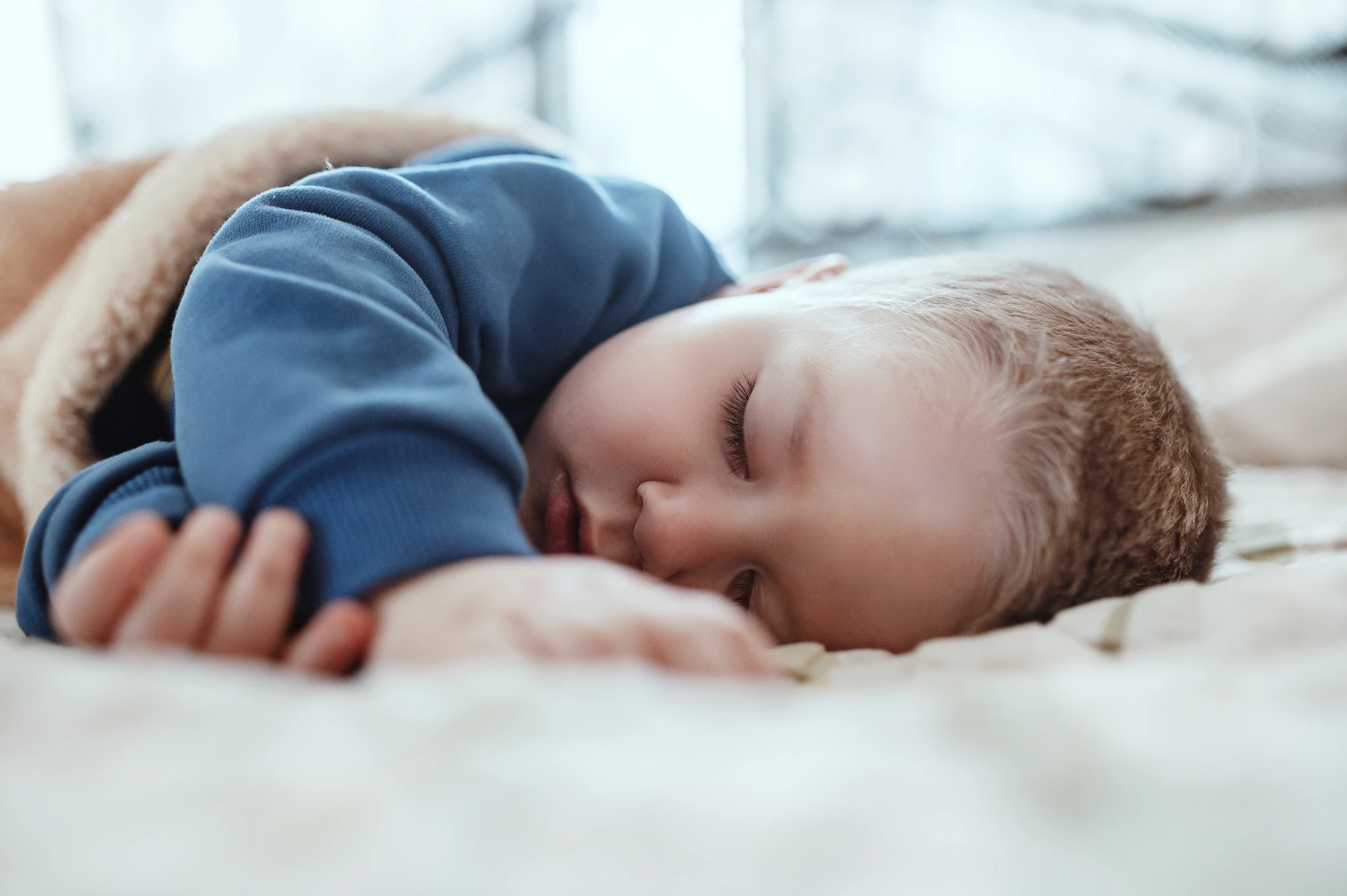
Daytime potty training may be going smoothly, but that doesn’t necessarily mean that nighttime potty training is, too. Nighttime potty training is its own beast.
Unlike daytime training, nighttime control requires your child to recognize and respond to their body’s signals while they are asleep. That can take longer to develop.
It’s essential to ensure that your child has mostly mastered daytime potty use before graduating to nighttime training. Until then, stick to diapers at night.
Control Liquid Intake
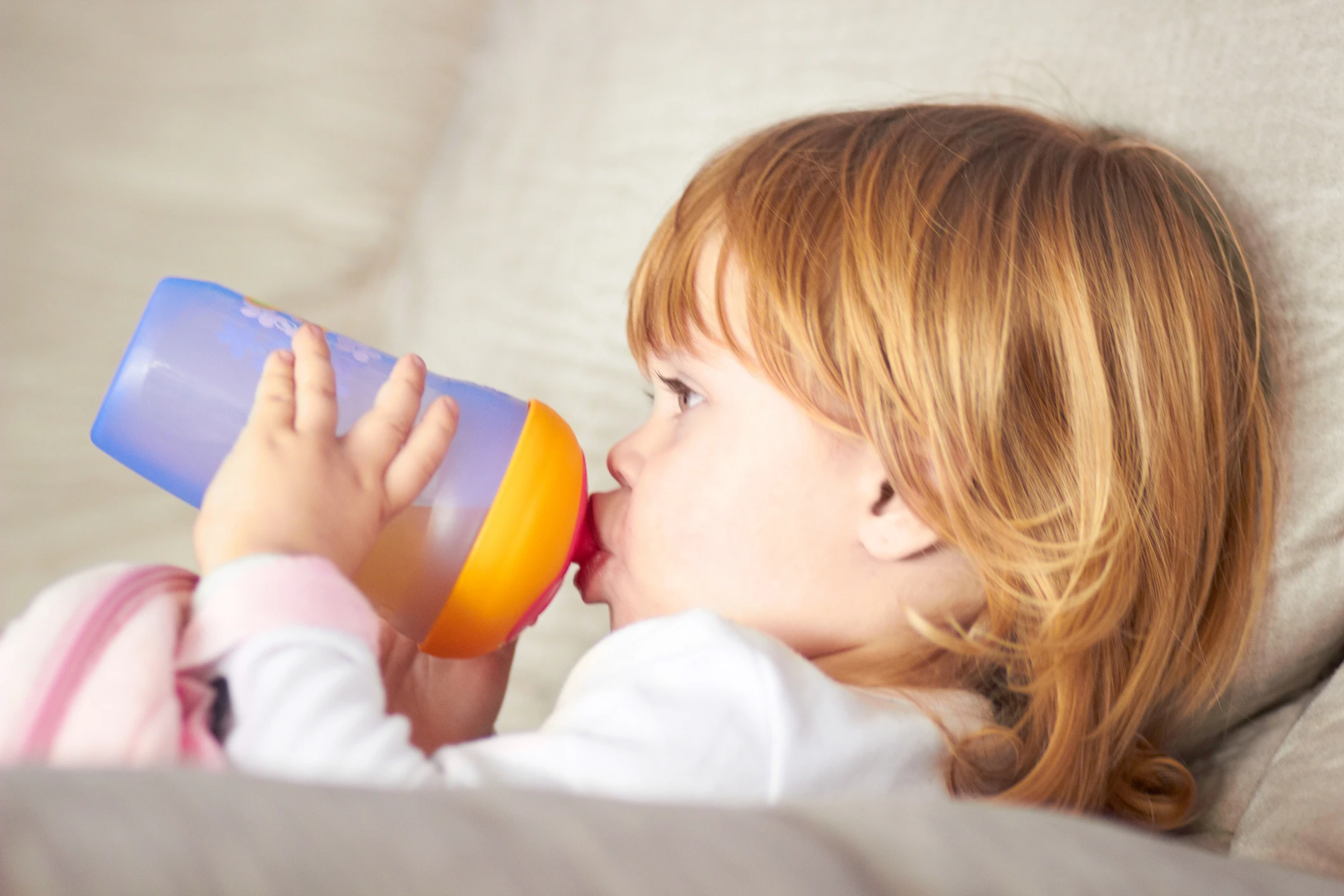
Especially as you begin the potty training process, it’s important to keep track of when your child is drinking liquids and how much liquid they’re drinking.
Time more substantial liquid intake to correspond with the times you’ve scheduled for potty training. That way, they’re ready to go when the time comes.
Try to avoid liquids before activities, especially if leaving the house, and just before bed. Other than that, they should drink liquids throughout the day.
Use Fun Soaps and Glitter “Germs”

Hand-washing is an essential part of potty training that you don’t want to overlook. It should be part of the potty training experience from the beginning.
A great way to get your child more enthusiastic about hand-washing is to use glitter “germs.” Sprinkle glitter on their hands, and have them wash it away.
You can also choose soaps in fun shapes and with fun scents to help them enjoy the process even more. It’s all about making it fun!
Try Giving Them Privacy
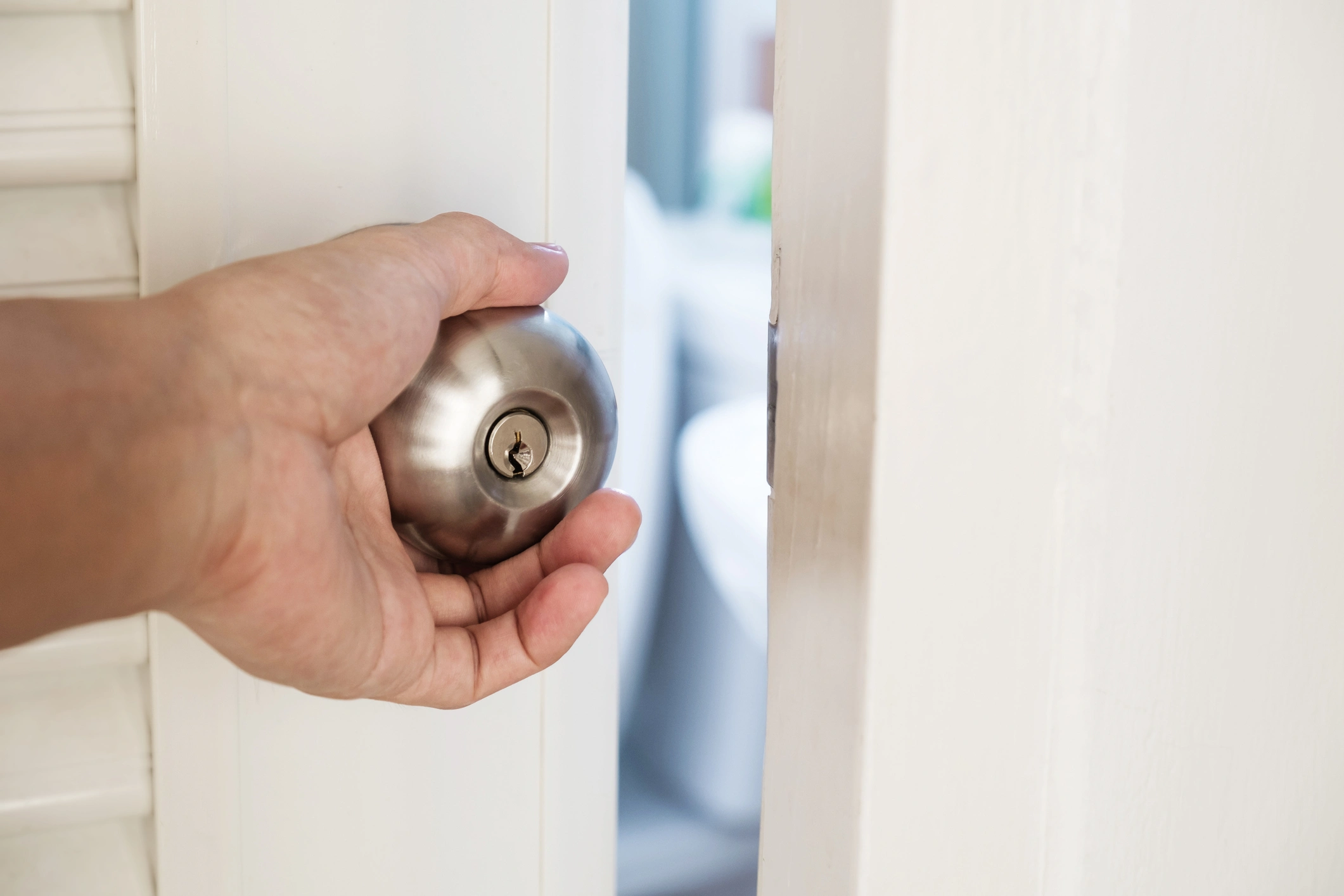
At first, your toddler will need you there to guide them through using the potty and to keep them engaged in the process. But eventually, they’ll want privacy.
As children grow, they begin to understand and value privacy, especially in vulnerable situations like using the bathroom. You should always respond to this need.
To encourage this sense of privacy, you can start by closing the door or using a privacy screen. Explain that it’s normal to want some private bathroom time.
Remember Regression Happens

Regression during potty training is a normal part of the learning process. When it happens, it doesn’t mean that all of that progress is lost.
This can happen due to changes in your child’s routine, like starting daycare or the arrival of a new sibling. Illness or stress can also cause it.
It’s essential to handle regressions with patience and understanding. Avoid showing frustration or disappointment, which can increase anxiety around potty training, and offer positive encouragement instead.
Conclusion
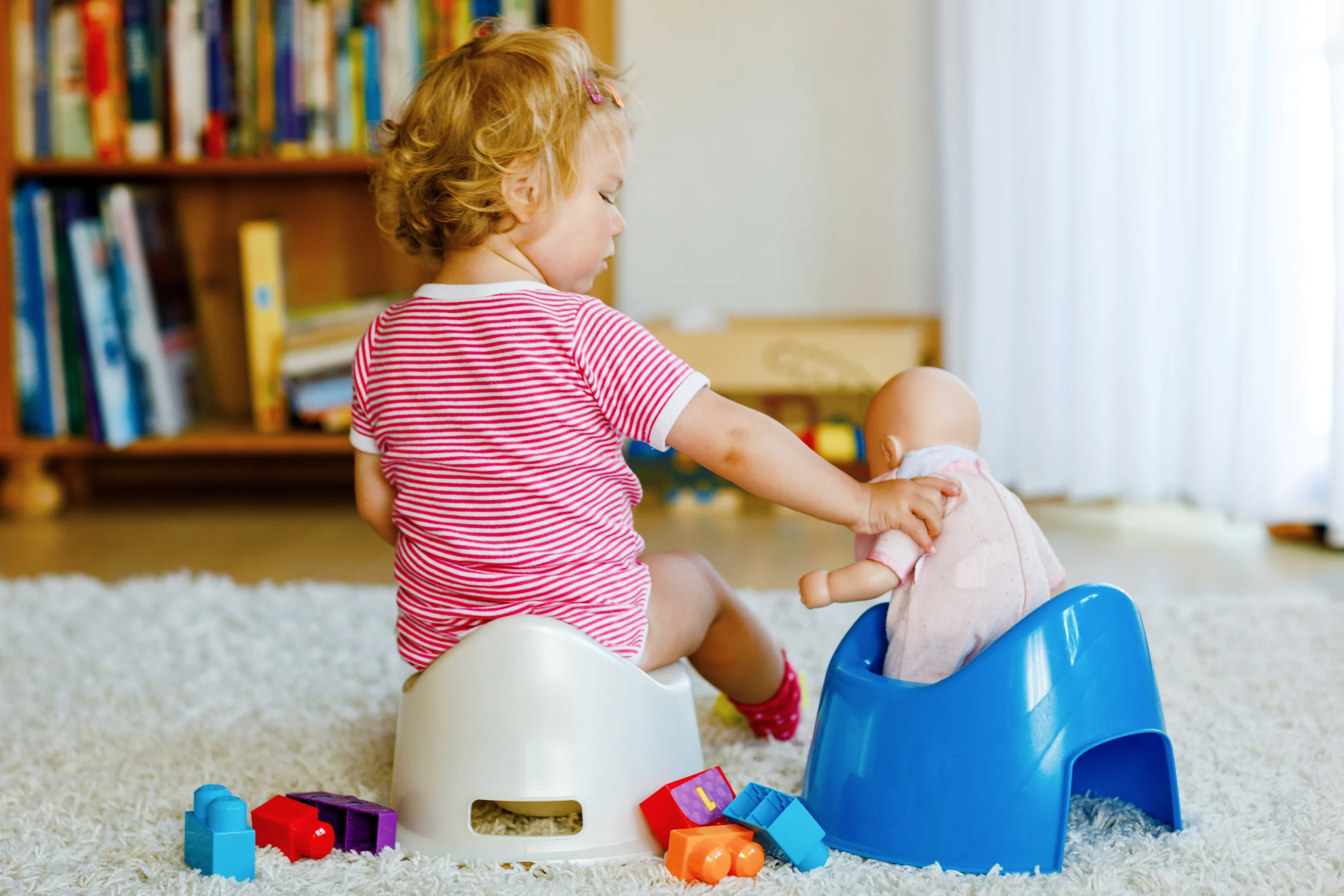
So there you have it — 30 ingenious potty training tips and tricks from real parents who have been there. Potty training can look different for every family, but these tried-and-tested tips can help you through the process to potty training success.
Frequently Asked Questions
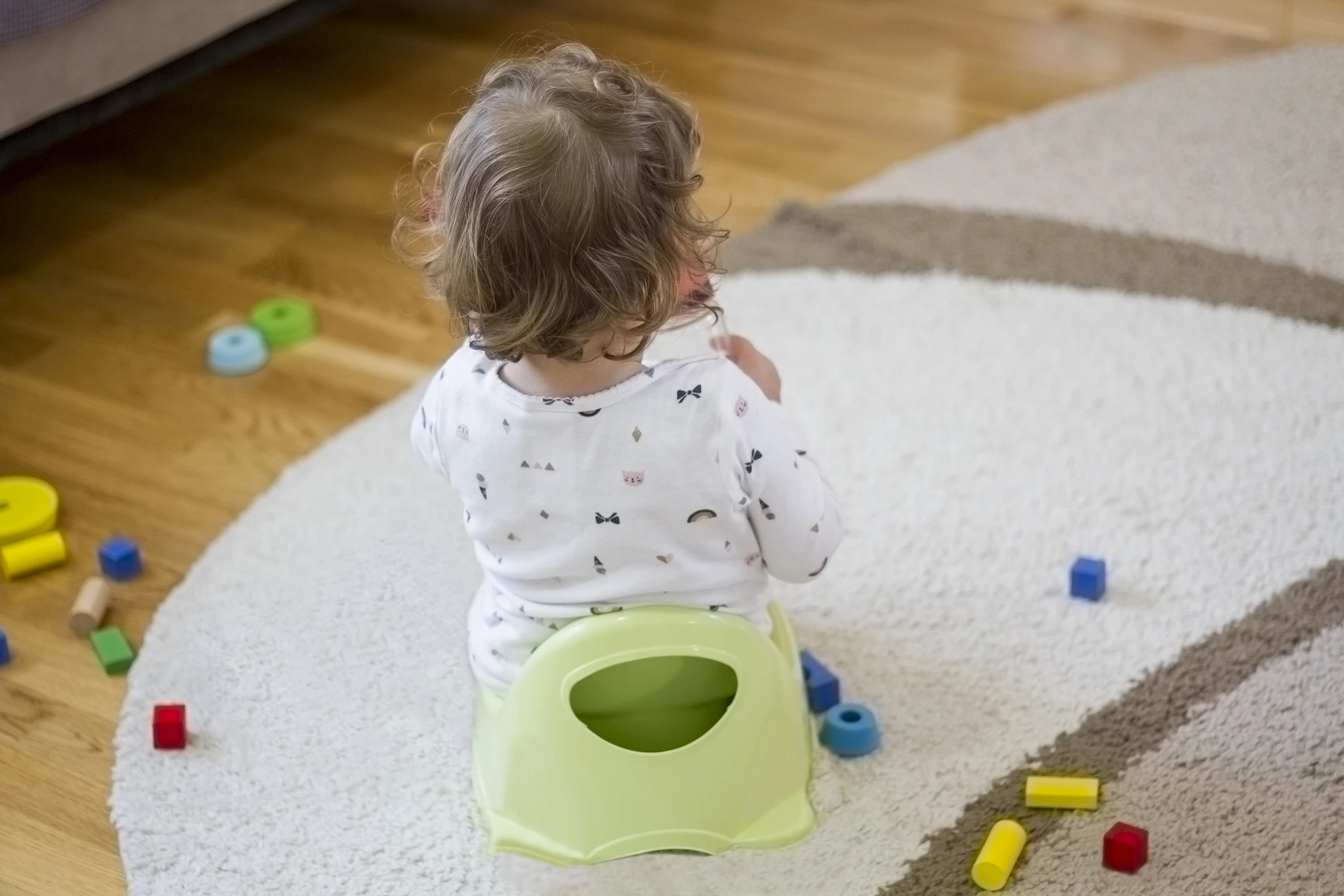
Question: What is the 3-day potty training rule?
Answer: The 3-day potty training method involves intensive potty training over three days. It aims to teach children to use the toilet independently through consistent practice and positive reinforcement.
Question: What is the easiest way to potty train?
Answer: Unfortunately, there’s no fast pass to potty training. The easiest way to potty train involves consistency and positive reinforcement, starting when the child shows readiness, and maintaining patience throughout the process.
Question: At what age should a child be fully potty trained?
Answer: Most children are fully potty trained by the age of 3 to 4 years old. However, individual differences in development and readiness can vary widely.
Question: How long does it realistically take to potty train?
Answer: Realistically, potty training can take anywhere from a few weeks to several months. The timeline varies widely depending on a child’s age, developmental readiness, and the consistency of your approach.
Question: What is the hardest day of potty training?
Answer: The hardest day of potty training often varies by child, but many parents find the first day to be particularly challenging. This is when children are just starting to understand what is expected of them, and both child and parent are adjusting to the new routine. Accidents are common, and it can be a test of patience for everyone involved.
Question: What is the sweet spot for potty training?
Answer: The “sweet spot” for potty training typically falls between the ages of 18 months and 3 years. During this period, most children are developmentally ready to start understanding and mastering the skills needed for potty training.
Question: How long after my toddler drinks do they pee?
Answer: Typically, a toddler may need to use the bathroom to urinate approximately 15 to 30 minutes after drinking liquids. However, this can vary based on several factors including their hydration level, the amount they drank, and their individual bladder capacity.
Question: Do pull-ups hinder potty training?
Answer: Pull-ups can be helpful for convenience. However, they may hinder potty training by reducing a child’s awareness of wetness, potentially slowing the learning process.


